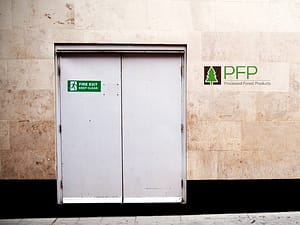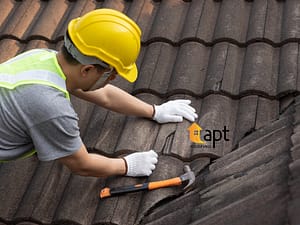Importance of Safety and Training in Chainsaw Use
The use of a chainsaw comes with inherent risks; hence, safety training isn’t just recommended—it’s essential. Understanding how to handle these powerful tools correctly can mean the difference between completing a job safely and risking serious injury.
- Why is safety training crucial for chainsaw operation? Safety training imparts knowledge on the correct operation of chainsaws, including handling techniques that minimize the risk of kickback, cuts, and other injuries. It also educates on emergency procedures if an accident occurs.
- What are the risks associated with improper chainsaw use? The risks include severe cuts, amputations, and even fatal injuries, not to mention the potential for property damage if a tree or branch is not felled correctly. Safety training aims to mitigate these risks.
Types of Chainsaw Safety Training
Choosing the right type of training is as important as the training itself. Various options exist to cater to different learning styles and availability.
- Overview of available chainsaw safety courses and certifications. Many organizations offer chainsaw safety courses ranging from basic to advanced techniques, with some providing certifications upon completion.
- Online vs. in-person training – which is better? While online courses can offer convenience and theoretical knowledge, in-person training is invaluable for gaining practical, hands-on experience under the guidance of an expert.
Essential Safety Gear for Chainsaw Operation
Operating a chainsaw without the proper safety gear is never an option. Personal Protective Equipment (PPE) is your first line of defense against common chainsaw hazards.
- A list of personal protective equipment (PPE) needed for chainsaw use.
- Helmet with Face Shield: Protects against flying debris and falling branches.
- Hearing Protection: Essential to guard against the loud noise of the chainsaw, which can cause hearing damage.
- Protective Gloves: Offer a better grip and protection from cuts.
- Chainsaw Chaps or Pants: Specially designed to resist cuts from the chainsaw blade.
- Cut-resistant Boots: Protect feet and provide better footing on uneven ground.
- High-visibility Clothing: Ensures the operator is clearly seen by others, especially when working in a team.
- Recommendations for quality safety gear brands and suppliers. Research and invest in quality brands known for durability and reliability. Local safety equipment suppliers often carry a range of products that meet safety standards specific to chainsaw operation.
Operating a Chainsaw: Safety Procedures and Techniques
Proper operation of a chainsaw is not intuitive; it requires knowledge of safety procedures and cutting techniques to avoid accidents.
- Step-by-step guide on the safe operation of a chainsaw.
- Before starting, check the chainsaw for loose parts, dull blades, or any damage.
- Always start the chainsaw on the ground or another stable surface, not in mid-air.
- Use a firm grip with both hands and stand with a balanced stance.
- Be mindful of your environment, ensuring that bystanders are at a safe distance.
- Techniques for reducing risk during cutting, felling, and limbing.
- Plan your cuts in advance, anticipating the direction of tree falls.
- Clear the base of the tree from debris to avoid tripping while working.
- Execute cutting at a steady pace, avoiding forceful or hurried motions that can lead to loss of control.
Best Practices for Chainsaw Maintenance
Maintenance of the chainsaw is a key safety aspect that is often overlooked in the equipment hire process.
- Routine checks and maintenance required before and after chainsaw use.
- Inspect the chain tension and sharpness – a well-maintained chain reduces the risk of kickback.
- Check the fuel and oil levels and look for any signs of leakage.
- Clean the air filter and cooling fins to ensure the chainsaw operates at an optimal temperature.
- How to spot signs of wear or damage that could compromise safety.
- Look for cracks or breaks in the chainsaw body.
- Ensure that the chain brake is functioning correctly.
- Regularly service the chainsaw at an authorized service center, especially for frequently hired equipment.
Preparing Your Work Area for Safe Chainsaw Use
A well-prepared work area is essential for safe chainsaw operation, a point that should be emphasized during the equipment hire process.
- How to assess and prepare the area where you’ll be using the chainsaw.
- Remove any obstacles that could impede your movement or alter the path of a falling tree.
- Establish a clear escape route to be used in case of emergency during felling.
- Identifying potential hazards and how to mitigate them.
- Be aware of overhead hazards like power lines or loose branches.
- On uneven ground, take extra precautions to maintain balance and control.
Handling Chainsaw Kickback and Other Emergencies
Kickback is one of the most common and dangerous risks associated with chainsaw use.
- Understanding what chainsaw kickback is and how it occurs.
- Kickback can happen when the nose of the chainsaw bar hits an object, or when the wood closes in and pinches the saw chain in the cut.
- Emergency procedures for handling kickback and other common chainsaw accidents.
- Always hold the chainsaw firmly with both hands and be prepared to release the throttle immediately if kickback occurs.
- If injured, stop work immediately, turn off the chainsaw, and seek medical attention.
Legal Requirements for Chainsaw Hire and Use
Those offering chainsaw hire services must be aware of the legal requirements governing the safe provision and use of such equipment.
- What are the legal obligations for chainsaw hirers and users in terms of safety?
- Equipment hire companies must ensure that all chainsaws are in good working order and meet safety standards.
- Users are required to follow all safety guidelines and may need to demonstrate competence or hold relevant certifications.
After-Use Protocols for Hired Chainsaws
After use, proper protocols ensure that the chainsaw is ready for the next hire and that any potential issues are reported and addressed.
- Steps to follow after using a chainsaw to ensure it is returned safely.
- Clean the chainsaw of any debris and wipe down the body to remove oil or fuel residue.
- Perform a post-use inspection similar to the pre-use check and report any issues.




